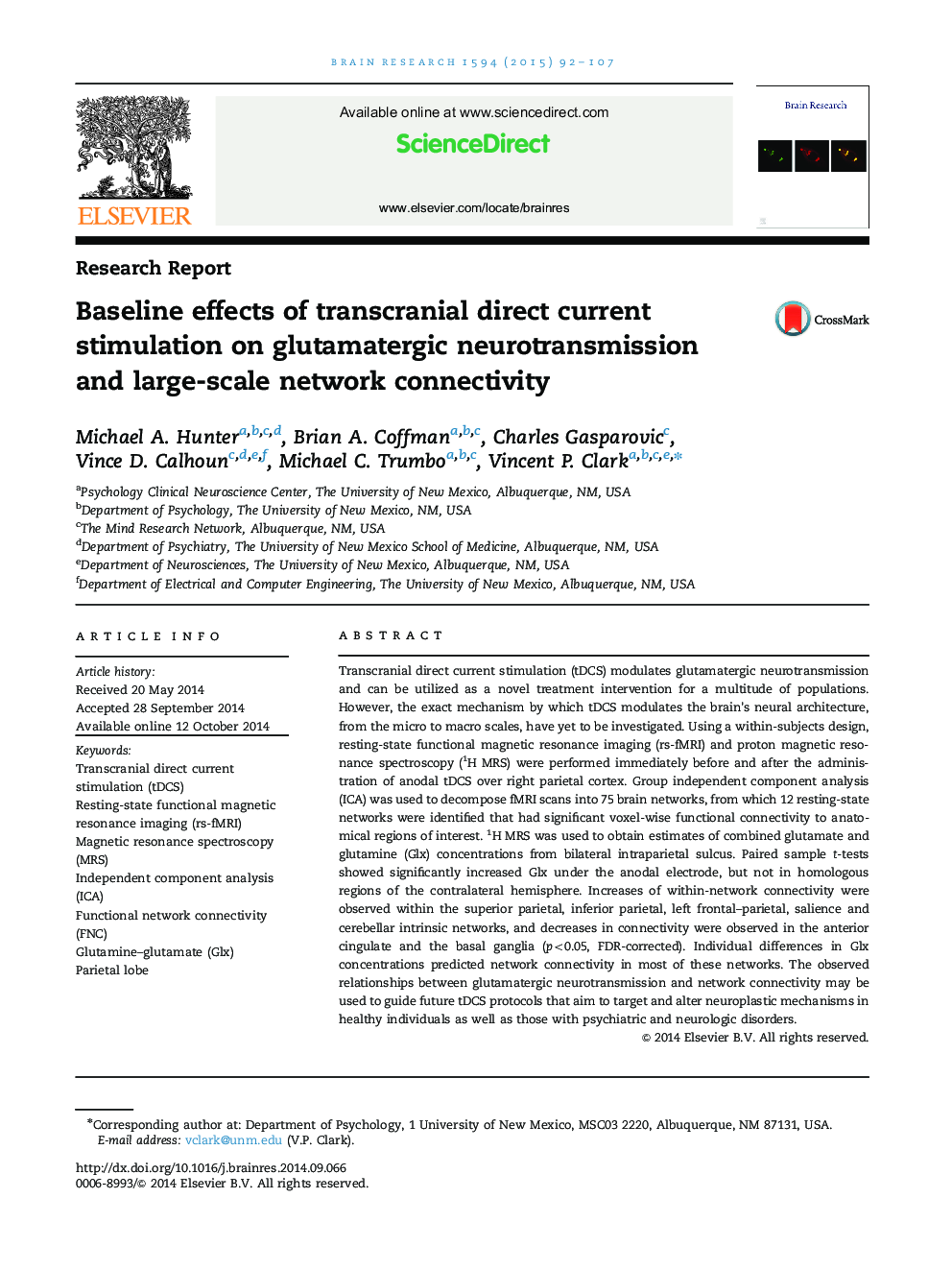| Article ID | Journal | Published Year | Pages | File Type |
|---|---|---|---|---|
| 4324011 | Brain Research | 2015 | 16 Pages |
•1H MRS and rs-fMRI were acquired before and after right parietal tDCS.•Anodal stimulation produced increased Glx in the right hemisphere only.•Increased connectivity was observed in parietal, “salience” and cerebellar networks.•Decreased connectivity was observed in anterior cingulate and basal ganglia networks.•The relationship between Glx and connectivity can be used to guide future tDCS studies.
Transcranial direct current stimulation (tDCS) modulates glutamatergic neurotransmission and can be utilized as a novel treatment intervention for a multitude of populations. However, the exact mechanism by which tDCS modulates the brain׳s neural architecture, from the micro to macro scales, have yet to be investigated. Using a within-subjects design, resting-state functional magnetic resonance imaging (rs-fMRI) and proton magnetic resonance spectroscopy (1H MRS) were performed immediately before and after the administration of anodal tDCS over right parietal cortex. Group independent component analysis (ICA) was used to decompose fMRI scans into 75 brain networks, from which 12 resting-state networks were identified that had significant voxel-wise functional connectivity to anatomical regions of interest. 1H MRS was used to obtain estimates of combined glutamate and glutamine (Glx) concentrations from bilateral intraparietal sulcus. Paired sample t-tests showed significantly increased Glx under the anodal electrode, but not in homologous regions of the contralateral hemisphere. Increases of within-network connectivity were observed within the superior parietal, inferior parietal, left frontal–parietal, salience and cerebellar intrinsic networks, and decreases in connectivity were observed in the anterior cingulate and the basal ganglia (p<0.05, FDR-corrected). Individual differences in Glx concentrations predicted network connectivity in most of these networks. The observed relationships between glutamatergic neurotransmission and network connectivity may be used to guide future tDCS protocols that aim to target and alter neuroplastic mechanisms in healthy individuals as well as those with psychiatric and neurologic disorders.
